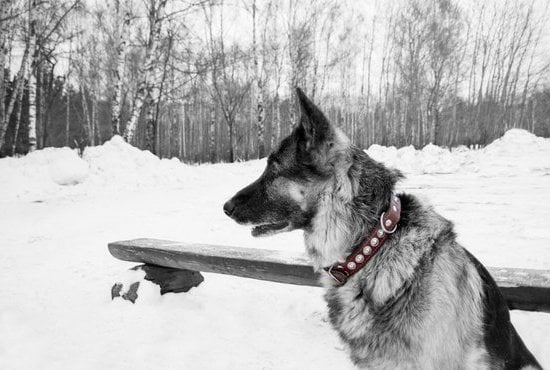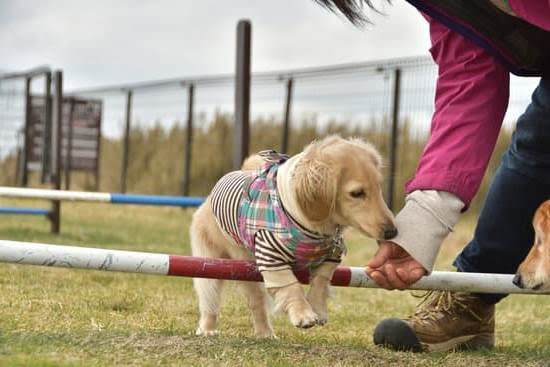Are you looking for information on how to train a service dog for autism? Service dogs play a crucial role in therapy for individuals with autism, providing support and assistance in various ways.
From selecting the right dog for training to teaching specialized skills and ensuring their ongoing success, the process of training a service dog for autism is multifaceted and requires dedication. In this article, we will explore the importance of service dogs for individuals with autism, as well as provide a step-by-step guide on how to train a service dog for autism, including building a strong bond, specialized skills training, public access training, and ongoing support and maintenance.
Service dogs are invaluable companions for individuals with autism, offering comfort, safety, and independence. The bond between a person with autism and their service dog can be incredibly profound and life-changing. It is important to understand the unique role that these specially trained animals play in supporting individuals with autism through their therapy journey. With the right training and support, service dogs can make a significant difference in the lives of those with autism.
Selecting the right dog is crucial in the process of training a service dog for autism. Not all dogs are suitable for this type of work, so it’s essential to consider factors such as temperament, size, and breed characteristics when choosing a potential candidate.
Building a strong bond between the individual with autism and their future service dog is also an integral part of the training process. This introductory section will set the stage for further exploration into the intricate process of understanding the role of service dogs in autism therapy as well as delving into specific techniques on how to train them effectively.
The Importance of Service Dogs for Individuals With Autism
The use of service dogs in therapy for individuals with autism has gained significant attention in recent years. These specially trained dogs can provide a wide range of benefits for people with autism, including promoting emotional well-being, improving social interactions, and providing a sense of security and stability.
Research has shown that the presence of a service dog can help reduce stress and anxiety levels in individuals with autism, as well as decrease the frequency and severity of certain behaviors.
One of the key benefits of having a service dog for autism is their ability to provide sensory support. Many individuals with autism experience sensory processing issues, and a well-trained service dog can assist in providing comfort and support during times of sensory overload.
For example, the dog may be trained to apply pressure or provide deep tactile stimulation to help calm their handler during moments of distress. This type of sensory intervention can be incredibly valuable for individuals with autism, helping them navigate challenging situations more effectively.
In addition to providing sensory support, service dogs can also be trained to intervene during specific behaviors or situations characteristic of autism. For example, a service dog may be trained to interrupt repetitive or self-injurious behaviors by gently nudging their handler or using other specialized techniques.
These interventions not only help manage challenging behaviors but also provide individuals with autism an alternative focus and coping mechanism during difficult moments. The specialized skills and support provided by service dogs play a crucial role in enhancing the overall quality of life for individuals with autism.
| Benefits | Details |
|---|---|
| Emotional well-being | Service dogs promote emotional well-being by reducing stress and anxiety levels in individuals with autism. |
| Sensory support | Dogs are trained to provide sensory support during times of sensory overload through appropriate tactile stimulation. |
| Behavioral intervention | Dogs are taught specialized techniques to interrupt repetitive or self-injurious behaviors, providing coping mechanisms for individuals with autism. |
Selecting the Right Dog for Service Dog Training
When it comes to selecting the right dog for service dog training, there are several important factors to consider. One of the most crucial elements in choosing a suitable candidate for autism service dog training is temperament. Dogs that are calm, patient, and easily trainable are best suited for this role. Additionally, the size and physical capabilities of the dog must also be taken into account, as they will need to perform specific tasks to assist individuals with autism.
Another important consideration when selecting a dog for service dog training is their energy level. It’s essential to choose a dog that has a moderate energy level and can remain focused and calm in various environments. This is particularly important for individuals with autism who may have sensitivities to loud noises or sudden movements. A well-behaved and stable temperament is crucial for a service dog as they will need to accompany their handler in public spaces.
Ultimately, choosing the right dog for service dog training involves careful consideration of various factors such as temperament, size, energy level, and physical capabilities. By selecting a suitable candidate, you can set the foundation for successful training and ensure that the individual with autism receives the support and assistance they need from their service dog.
If you’re unsure about how to train a service dog for autism or which breed would be best suited for this type of work, it’s recommended to seek guidance from professional trainers or organizations specializing in service dog training for individuals with autism.
Building a Strong Bond
Training a service dog for autism requires a strong foundation built on trust, respect, and bond between the dog and the individual with autism. The first steps in service dog training are focused on creating a strong connection between the dog and the person they will be assisting. Here are some important aspects to consider when building this crucial bond:
- Patience and Consistency: Patience is key when building a bond with a service dog for autism. Consistent training, positive reinforcement, and clear communication are essential for creating trust and understanding between the dog and their handler.
- Socialization: It’s important for the service dog to be well-socialized from an early age to ensure they are comfortable in various environments and around different people. This can help them adapt to the specific needs of individuals with autism.
- Emotional Connection: Developing an emotional connection between the dog and the individual with autism is vital. This can be achieved through regular interaction, playtime, grooming sessions, and bonding activities that foster a deep sense of companionship.
By focusing on these initial steps in building a strong bond, the foundation for successful service dog training can be established. As this bond grows stronger, it sets the stage for more advanced training techniques tailored to meet the specific needs of individuals with autism.
Once this foundational relationship has been established, further specialized skills training can be implemented to help address sensory support and intervention needs for individuals with autism. With dedication, patience, and proper guidance, a service dog can become an invaluable companion in providing support and assistance to someone living with autism.
Training Techniques for Service Dogs for Autism
- Establish a strong foundation: Begin by establishing a strong bond with your service dog through positive reinforcement, building trust, and creating a consistent routine. This will set the stage for effective training and ensure that the dog is responsive to commands.
- Socialization and desensitization: Expose your service dog to different environments, people, and situations to help them become comfortable and confident in various settings. This is important for preparing the dog to work in public spaces with individuals with autism.
- Task-specific training: Train your service dog to perform specific tasks that are tailored to the needs of individuals with autism. This may include providing comfort during sensory overload, interrupting repetitive behaviors, or alerting others during a meltdown.
- Sensory support training: Teach your service dog how to provide sensory support to individuals with autism by using pressure therapy, deep pressure stimulation, or other sensory-based interventions. This can help regulate sensory input and provide comfort during times of distress.
- Communication and obedience training: Focus on teaching your service dog clear communication cues and obedience commands to ensure that they can effectively assist individuals with autism in various situations. This includes responding to verbal commands, hand signals, and non-verbal communication cues.
By following these step-by-step training techniques, you can effectively train a service dog for autism and provide valuable support to individuals living with this condition. Patience, consistency, and ongoing practice are key factors in successful service dog training for autism.
Teaching Specialized Skills
When it comes to training a service dog for autism, it’s important to understand the specialized skills necessary to provide sensory support and intervention for individuals with autism. These skills are crucial in helping those with autism navigate the challenges they may face in their daily lives, and a well-trained service dog can be a valuable tool in providing this support.
One of the key aspects of sensory support and intervention training is teaching the service dog to recognize and respond to sensory overload or meltdown behavior. This involves recognizing signs of distress in their handler and intervening by providing comfort, redirection, or physical support as needed. This can include tasks such as nuzzling or applying pressure to provide deep pressure stimulation, which can help regulate sensory input for the individual with autism.
In addition to providing sensory support, service dogs for autism also undergo training to learn specific intervention techniques. These interventions can include tasks such as interrupting self-harming behaviors, guiding their handler away from potentially dangerous situations, or detecting and alerting others to potential medical issues. By teaching these specialized skills, service dogs can truly make a difference in the lives of individuals with autism, providing them with both practical assistance and emotional support.
| Specialized Skills | Support Provided |
|---|---|
| Sensory Overload Recognition | Recognizing signs of distress and responding with comfort or redirection |
| Intervention Techniques | Interrupting self-harming behaviors, guiding away from danger, detecting medical issues |
Public Access Training
Training a service dog for autism involves various stages, including public access training to prepare the dog for real-world environments. This phase of training is crucial as it ensures that the service dog can accompany the individual with autism in various public settings and perform its tasks effectively.
During public access training, the service dog is exposed to different environments such as shopping malls, restaurants, schools, and other high-traffic areas. The goal is to desensitize the dog to distractions and teach it how to remain calm and focused while in public. This phase also includes teaching the service dog proper behavior and obedience when encountering other people and animals.
To start public access training, it’s important to begin in low-stress environments and gradually progress to busier places. Handlers can use positive reinforcement techniques to encourage desired behaviors from the service dog. It’s also essential to work on commands such as “sit,” “stay,” “heel,” and “leave it” to ensure that the dog responds appropriately in public settings.
In addition to obedience training, public access training also involves teaching the service dog how to navigate through crowded areas without getting anxious or overwhelmed. This may include practicing walking through busy sidewalks, maneuvering around obstacles, and remaining focused on their handler despite environmental stimuli. Overall, public access training plays a vital role in preparing a service dog for autism to accompany their handler in everyday situations.
Ongoing Support and Maintenance
Regular Veterinary Care
One of the most important aspects of maintaining a service dog for autism is ensuring their physical health. Regular veterinary care is crucial to keeping your service dog healthy and happy. This includes annual check-ups, vaccinations, and preventative care to keep your dog in top condition.
Consistent Training and Socialization
Just because a service dog has completed their initial training doesn’t mean that their education is complete. Ongoing training and socialization are essential for maintaining a well-behaved and reliable service dog for autism. This could include reinforcing commands, introducing new skills, or exposing the dog to various social situations to ensure they remain calm and focused in public settings.
Emotional Support for Your Service Dog
It’s important to remember that as much as service dogs are providing support to individuals with autism, they also need support themselves. Providing emotional care for your service dog through positive reinforcement, mental stimulation, and plenty of love and attention is vital for their overall well-being.
Overall, ongoing support and maintenance are crucial for the continued success of a service dog for autism. By prioritizing veterinary care, consistent training and socialization, as well as emotional support, you can ensure that your service dog remains an invaluable companion for individuals with autism.
Conclusion
In conclusion, the benefits of having a service dog for individuals with autism are immeasurable. These specially trained dogs provide companionship, emotional support, and practical assistance to those living with autism. The bond between a person with autism and their service dog can be life-changing, offering a sense of security and independence that may not have been possible otherwise.
The ongoing need for training and support for service dogs for autism cannot be overstated. It is crucial that both the dog and the individual with autism receive continued guidance and reinforcement to ensure the success of the partnership. This includes regular training sessions, access to resources for specialized skills development, and ongoing support for public access training in real-world environments.
In light of this ongoing need for training and support, it is essential that individuals interested in learning how to train a service dog for autism seek out reputable resources and professionals in the field. By following a step-by-step guide and utilizing proven training techniques, individuals can set their service dogs up for success in providing sensory support and intervention when needed.
With dedication, patience, and the right tools, individuals can create a strong bond with their service dog that will greatly enhance their quality of life.
Frequently Asked Questions
Can You Train a Dog to Help With Autism?
Yes, you can train a dog to help with autism. These dogs are called autism service dogs. They are trained to provide comfort, support, and companionship to individuals with autism. They can also help with sensory issues and emotional regulation.
What Disqualifies a Dog From Being a Therapy Dog?
Dogs can be disqualified from being therapy dogs if they display aggression, fear, or anxiety. They must also have good manners and be well-behaved in various settings. Additionally, they must be healthy and up-to-date on vaccinations.
Are Service Dogs Effective for Autism?
Service dogs have been shown to be effective for individuals with autism. They can provide assistance in social situations, help reduce anxiety, and improve safety by preventing elopement or running away. Service dogs can also offer comfort and companionship for those with autism.

Welcome to the blog! I am a professional dog trainer and have been working with dogs for many years. In this blog, I will be discussing various topics related to dog training, including tips, tricks, and advice. I hope you find this information helpful and informative. Thanks for reading!





